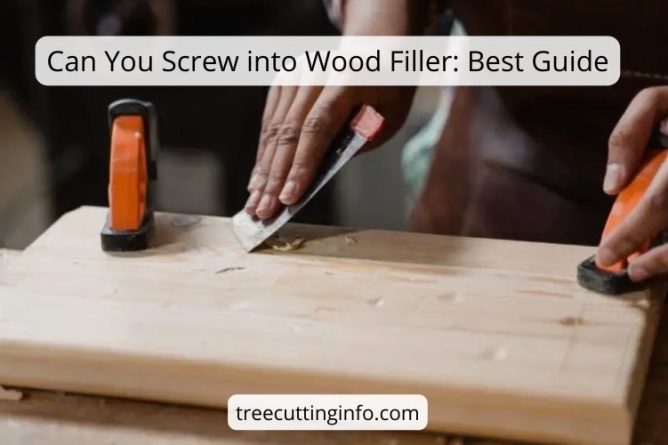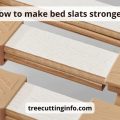In woodworking, when you come across wood that’s rough or slightly damaged, wood filler is typically the preferred method to fix these flaws.
However, a common query arises post-repair: is it possible to insert screws into the wood filler?
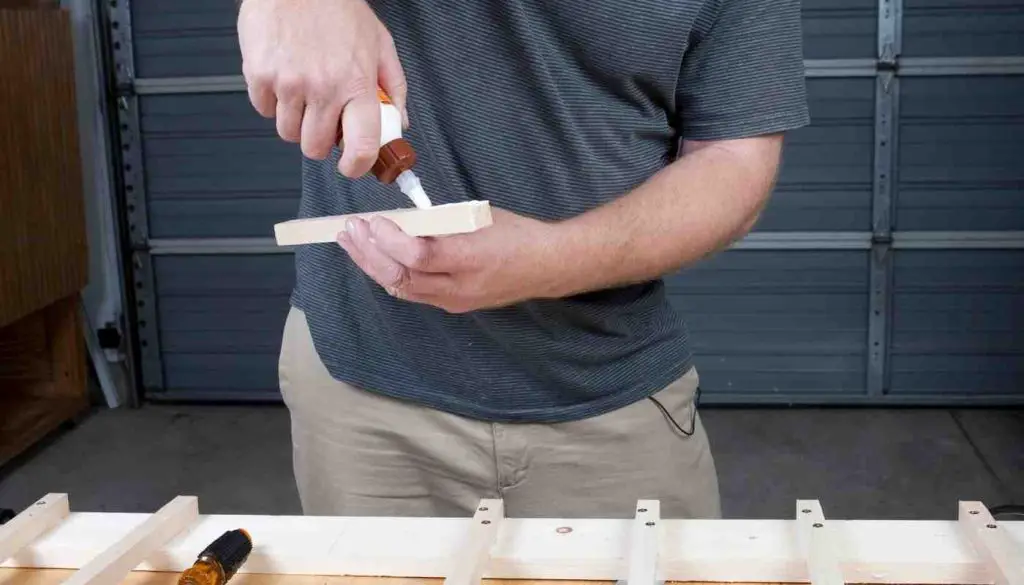
Based on my personal journey through numerous woodworking endeavors, I’d like to offer some insights on this. Can you screw into wood filler?
Can you screw into wood filler?
Inserting screw into wood filler can be done, but it’s not always advisable, particularly for lasting solutions.
When durability and structural strength are key, relying solely on wood filler might not be the optimal choice.
There are several other considerations when it comes to screwing into epoxy wood filler, which I’ll delve into further.
Types Of Wood Fillers
You’ll find a variety of wood fillers available, each with distinct properties.
Some are lightly sand-able, allowing for a smooth finish, while others are stainable, wooden match sticks color.
Additionally, there’s the DIY route where you can create your own wood filler using wood dust mixed with lacquer, varnish, or wood glue.
The choice between water-based or solvent-based products largely depends on the condition of your wood.
Generally, most wood fillers used are used to fill holes or cover gaps on the wood’s surface, but it’s important to understand their different characteristics to select the right one for your project.
Solvent Vs Water Fillers
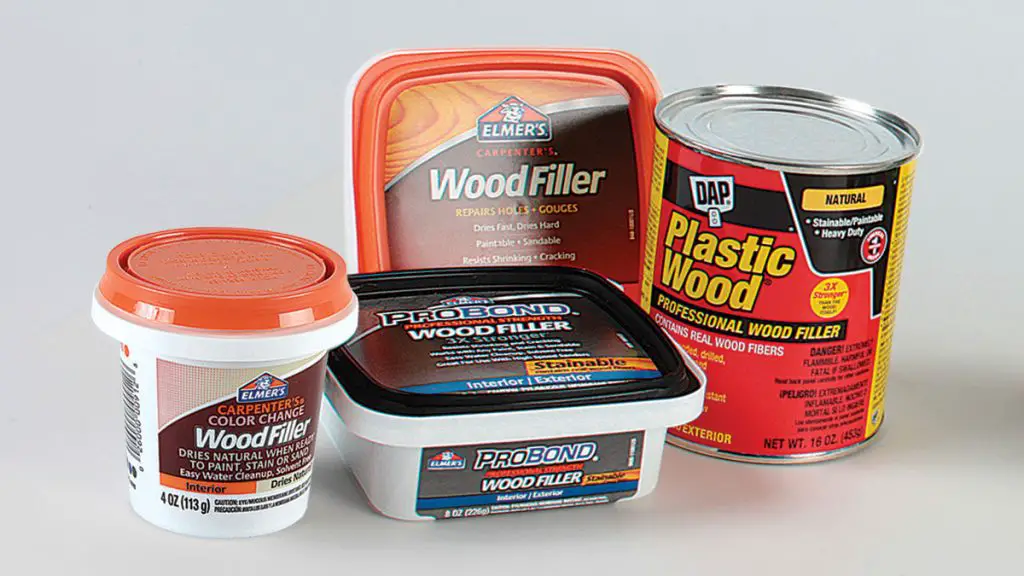
Water-based wood fillers offer a quick drying time, typically setting in about 15 minutes.
They’re also user-friendly in terms of cleanup, requiring just water and soap.
These fillers are generally made from a mix of cellulose, wood fiber, or gypsum and are less toxic compared to other formulas like epoxy wood fillers.
Initially, they may emit volatile organic compounds (VOCs), but these dissipate quickly.
In comparison to solvent-based fillers like epoxy, water-based fillers can be easily thinned down with water and, if necessary, mixed with a thinner for certain wood projects.
However, they are best suited for indoor use as they don’t contract or expand with the wood over time.
Contrastingly, solvent-based or epoxy-based wood fillers, which contain higher levels of toxic compounds or VOCs (like vinyl and epoxy), have a stronger odor that lasts until they dry, usually within an hour.
They are more expensive than water-based fillers and require turpentine or similar chemicals for cleanup.
However, epoxy wood fillers are highly resistant to extreme weather and humidity, making them an excellent choice for exterior wood projects.
Their durability in such conditions is a significant advantage.
About Epoxy Wood Fillers

Securing the ideal wood for your projects can often be the toughest step. Unexpected cracks and splits can show up, sometimes in the least anticipated places.
Therefore, choosing a top-quality wood filler is essential for bridging these gaps and achieving a smooth surface.
The majority of most wood fillers are designed to mend dents and conceal cracks on natural wood surfaces.
They function as binders, comprising a sandable substance blended with a hardening resin solution.
This mixture penetrates deep into the wood, effectively bonding the rotted wood fibers together.
Screw into wood filler Advisable?
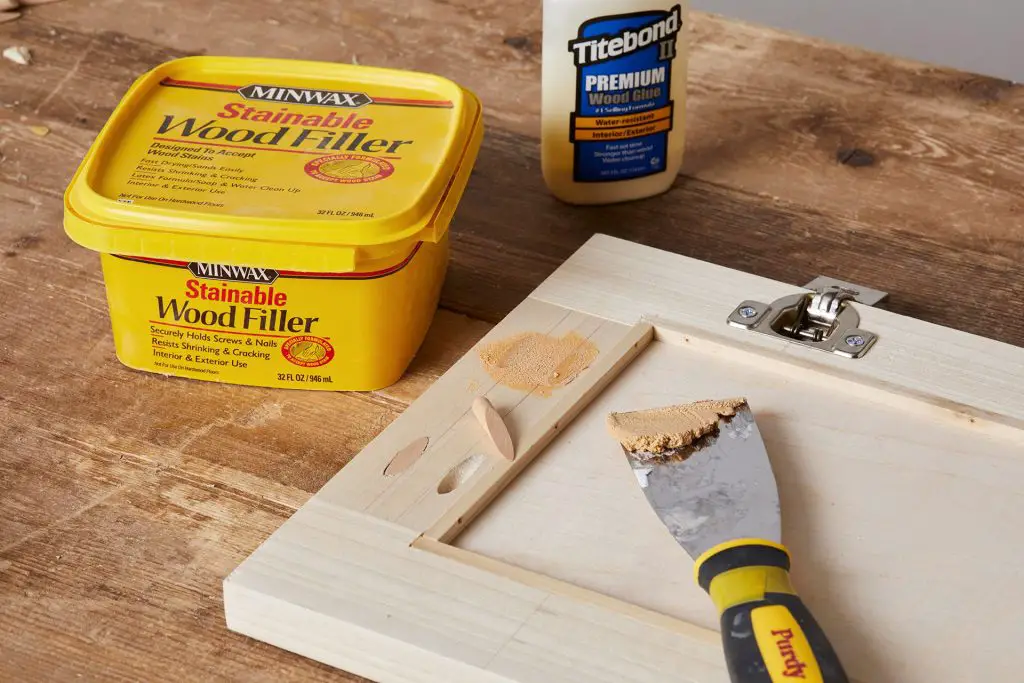
Indeed, besides being suitable for sanding and staining, epoxy wood filler can also be used for screwing.
However, it’s generally recommended to opt for epoxy-based wood fillers for such tasks.
Many woodworkers favor this type, particularly for screwing into areas that have been filled.
The advantages of epoxy fillers extend beyond just screwing; they are also excellent for sanding, painting, and drilling, making them a versatile choice for various woodworking applications.
Can Wood Fillers Hold Screws?
The wood, when filled with a fully cured epoxy wood filler, can indeed support hold screws a limited amount of weight.
It’s important to consider that different types of screws may behave differently when used with wood fillers.
Additionally, you might encounter specific challenges when using screwing into wood, and drilling screw into wood filler.
The nature of these issues often depends on the type of filler used and the characteristics of the screws, so it’s crucial to be aware of these factors to ensure a successful application.
Can You Drill Wood Filler?
That’s correct.
There are wood fillers available which are specifically formulated drilling to accommodate.
It’s important to consider the type of wood you’re working.
Whether hardwood or softwood, this can influence the drilling process.
When drilling into epoxy wood filler, the depth of the drill must be carefully managed, especially in different wood fillers types of wood, to ensure a strong hold and to prevent any damage to the wood or the epoxy-based wood filler.
This careful approach is key to maintaining the integrity of your woodworking project.
| Wood Type | Drilling Depth of Wood Filler |
| Hardwood (Oak, Walnut, Mahogany, Ash, Merbau) | 1/4 inches or 6.5 mm |
| Semi-hardwood (Fir, Pine) | 1/2 inches or 13 mm |
| Semi-hardwood (Cherry, Maple, Birch) | 5/8 inches or 15 mm |
| Softwood (Cedar) | 1 inch or 25 mm |
Issues With screw into wood filler
Absolutely, understanding that screwing into epoxy wood filler is possible, it’s equally important to be prepared for potential challenges you may face in your woodworking project.
To navigate these effectively, here are some preventive measures and best practices to consider:
Proper Curing Time:
Ensure the epoxy wood filler has completely cured before attempting to screw into it.
Follow the manufacturer’s recommended drying time to avoid any issues with stability or adhesion.
Select the Right Filler:
Choose a filler that’s appropriate for your specific project needs.
If you plan to screw into the filler, opt for a high-strength, drillable type like an epoxy-based filler.
Use the Correct Screws:
Pick screws that are suitable for the type of wood and filler you’re working with.
Consider factors like the screw’s length, diameter, and material.
Pre-Drilling Holes:
To reduce the risk of cracking or splitting the filler, pre-drill holes for the screws.
This is especially important for harder fillers or when working near the rough edges of the filled area.
Gentle Screw Driving:
Drive the screws gently and at a consistent speed to avoid over-tightening, which can cause the filler to crack or lose its grip.
Regular Inspections:
Regularly inspect the screwed areas, especially in environments with fluctuating temperatures or humidity, as this can affect the filler’s hold over time.
Surface Preparation:
Before applying the filler, make sure the surface is clean, dry, and free of any debris or loose wood fibers to ensure good adhesion.
Test on a Sample:
If possible, conduct a test on a scrap piece of wood with the same filler to gauge the strength and stability of the screw hold.
By adhering to these measures and best practices, you can significantly enhance the success and longevity of your woodworking projects involving wood filler.
Types Of Wood Fillers To Use For Screws
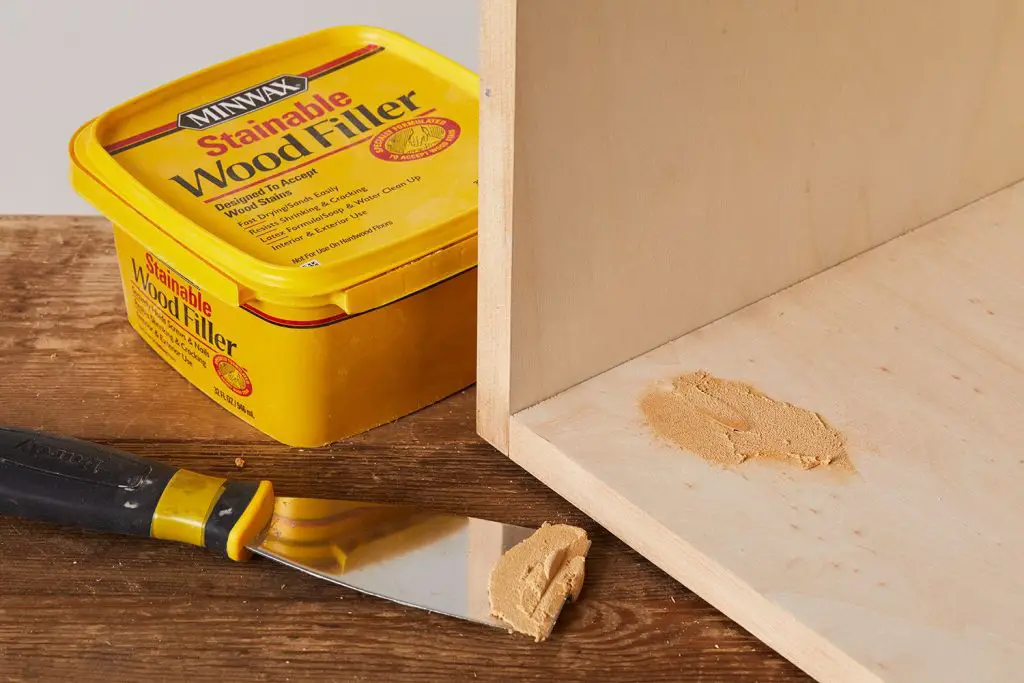
In addition to solvent-based or water-based filler to solvent-based, there are different kinds of wood fillers that you can use for your screws.
Multipurpose Wood Filler
In the case of wood type of multi-purpose wood fillers let you fix, screw or nail holes in it, without causing the wood shrink or crack.
The filler can expand or contract as the wood ages making it perfect for use indoors or outdoors.
The wood will dry within two hours.
Two-Part Epoxy Wood Filler
The wood filler made of two parts does not expand or shrink when you apply it to wood.
They are immune to insect damage.
For the application of multipurpose wood filler it is necessary to first apply wood filler using the two-part process, which is the name.
Exterior Wood Fillers
It is also possible to use outdoors or outside wood fillers as they’re flexible to cold and extreme temperatures, as well as able to hold the weight of a large amount.
It also doesn’t result in cracks and burns the paint.
It is unlikely to require to replace it for a few years.
Simple Wood Fillers
Are simple wood fillers hold screws able to keep large screws all in place?
A simple wood filler or stopper are not effective in anchoring screws.
You can’t drill through the dap plastic wood filler or stopper.
It is much more effectively than others due to the fact that it’s composed from chalk that can cover the chipped areas of the area.
Bondo Wood Filler
It’s a kind type of wood filler with two components which is durable and will not shrink.
The wood filler is fast to cure even though it’s a filler for painting repairs on both outdoor and indoor wood construction.
Elmer’s Wood Filler
A high-quality brand of elmer’s which is perfect for repairing holes or imperfections on board or wood.
This can be applied to an molded or painted surface.
What is the difference between Bondo Wood Filler and Elmer’s Wood Filler
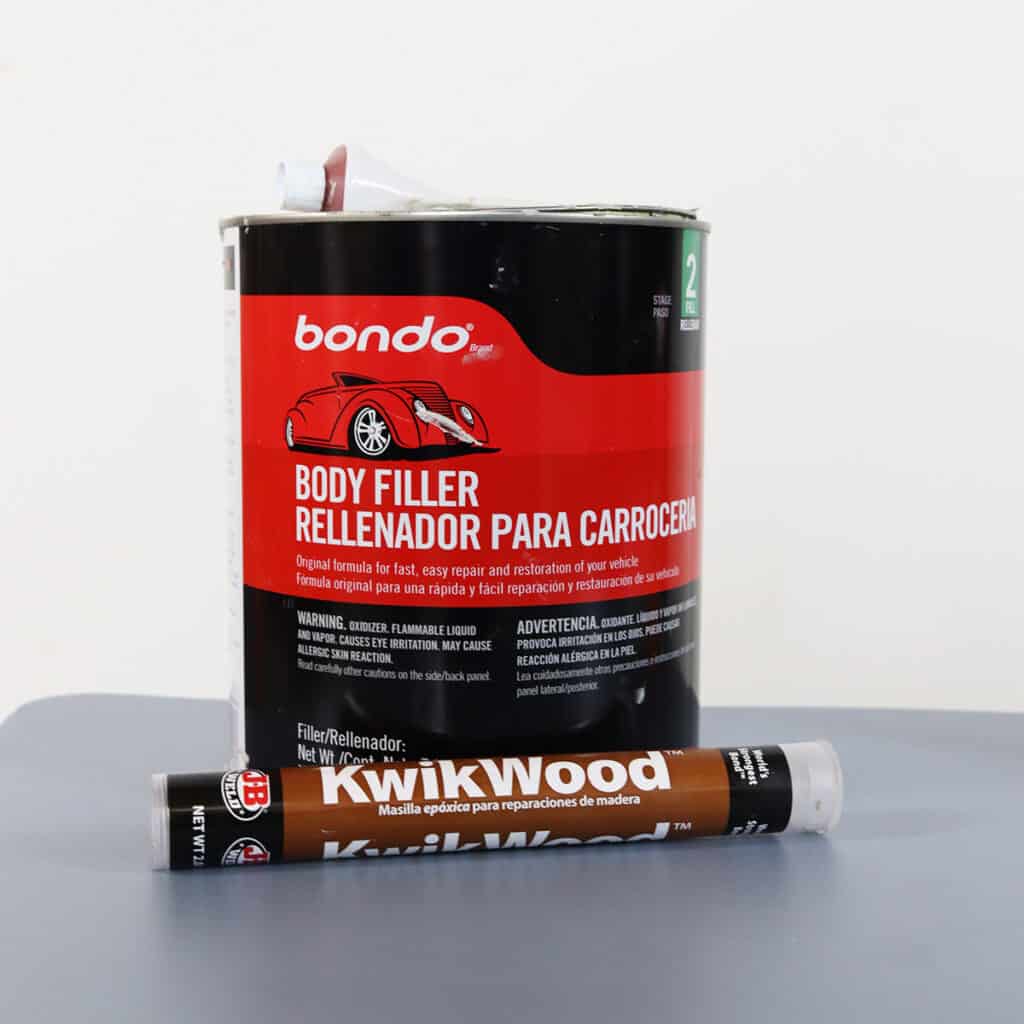
Bondo and Elmer’s Filler are two popular wood filler products, but they have some differences in terms of their formulations and intended uses:
- Brand: Bondo is a well-known brand that produces a wide range of automotive and repair products, including wood fillers. Elmer’s, on the other hand, is a well-known brand primarily associated with school glue and related adhesive products.
- Composition:
- Bondo: This is a two-part wood filler, typically epoxy-based. It consists of a resin and a hardener that you mix before application. This type of wood filler is known for its strength, durability, and excellent adhesion. It’s often used for both automotive and woodworking applications and is suitable for repairing large gaps, holes, and even structural damage in wood.
- Elmer’s Wood Filler: Elmer’s is typically a water-based wood filler. It’s a single-component product and doesn’t require mixing. While it’s suitable for repairing minor imperfections in wood, it may not be as strong or durable as epoxy-based fillers like Bondo. Elmer’s is generally more suitable for smaller, cosmetic repairs and filling nail holes, cracks, or minor surface blemishes.
- Strength and Durability:
- Bondo: Bondo wood filler is known for its strength and durability. It can handle more substantial repairs and is often used for applications where structural integrity is essential.
- Elmer’s Wood Filler: Wood Filler is generally less robust compared to Bondo. It’s best suited for lighter, non-structural repairs and touch-up work.
- Drying Time:
- Bondo: Bondo wood filler typically dries relatively quickly, allowing for faster project completion.
- Elmer’s Wood Filler: Wood Filler usually has a longer drying time compared to epoxy-based fillers like Bondo. You may need to wait longer before sanding or painting the surface.
- Odor:
- Bondo: Bondo may have a stronger chemical odor due to its epoxy-based formulation.
- Elmer’s Wood Filler: Wood Filler is water-based and generally has a milder odor, which can be more user-friendly in terms of smell.
Applying Wood Filler To Hold Screws: What To Do
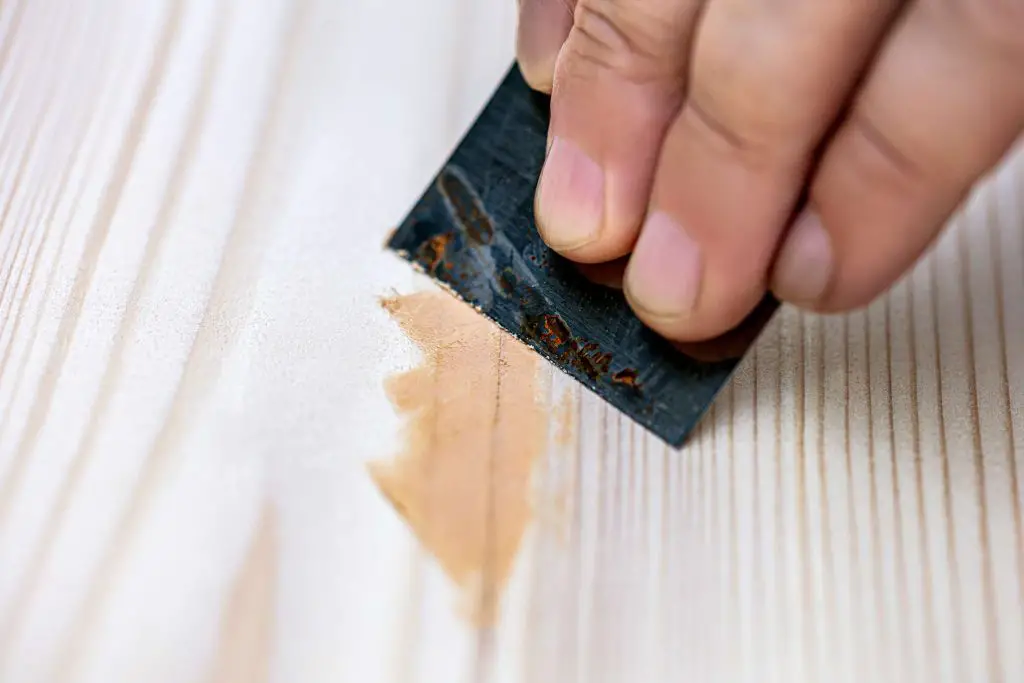
Now, you’re getting ready for applying real wood filler for screws.
This is how to finish your wood work the professional look.
Step #1: Prepare The Surface
Prior to beginning any woodwork It is essential to prepare the wood surface. Start by sanding the rough edges in order to make the foundation is smooth.
After that, wash the wooden surface with a dry, clean cloth in order to get rid of any dust or small wood pieces.
Step #2: Ready Your Wood Filler
After that, you need the mixing bowl you need to mix your apply wood filler in it.
The proportion of filler for wood must be 16:1, which is equivalent to 16 portions of the filler, and one component of hardener.
When you have mixed the white hardener fully in the wood filler the best time to apply it is in the span of 15 minutes. In the event that it is not done, the wood filler hold and will dry out and become hard making it hard to work with.
Step #3: Start Applying The Wood Filler
Utilizing a putty knife made of a putty knife, it is possible to begin the process of applying to fill in the screw holes and gaps in the surface. It is recommended to apply a small more screw into wood filler to give yourself a bit of room as the filler drys and shrinks.
Step #4: Allow The Wood Filler To Completely Dry
The time frame should be minimum 30 minutes or two hours in order to be sure the best wood filler to hold has been applied thoroughly. If it is humid it is necessary to sit for three hours or more. Time to cure for the wood filler is essential in order to allow the wood to be able to hold the screws.
Step #5: Don’t Forget To Sand The Surface
If your wood filler has totally and completely dried out, you will need polish the wood to eliminate impurities and extra from other wood fillers. Sanding makes the wood surface uniform and smooth texture to the primer paint.
Step #6: Apply Paint Or Finish
When the surface is cleaned, apply your primer stain or loose paint as the final touch to the wood project. It will cover the marks of other wood filler and provide your wooden surface with a the perfect look.
Step #7: Final
After you have put on your final steps, you should wait at least 48 hours prior to you put your screw into wood filler. Make a note of where you’ll screw. Choose the appropriate size of drill bit according to the kind of wood you chose to use.
The right size of screws and the drill bit to the right type of wood can protect the filler from damage.
What should I do to prevent the wood putty from cracking when screwed in?
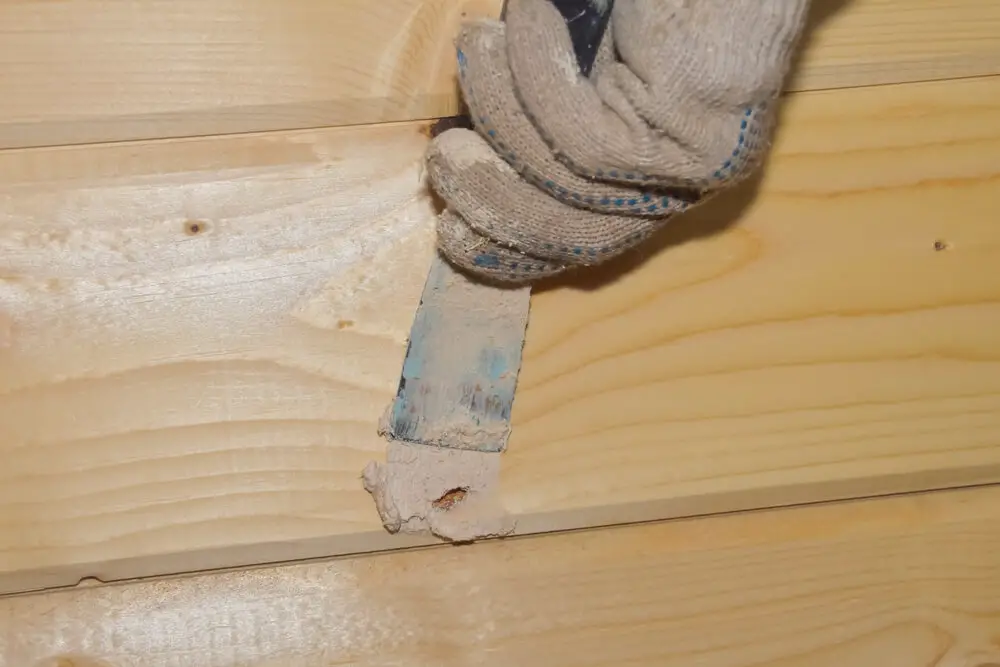
- Method 1: Fill The Hole With Epoxy And Drill It
- Method 2: Fix The Hole With Toothpicks Or wooden match sticks
- Method 3: Filling The Hole With wooden dowels Of The Same Wood
- Method 4: Use Larger Screws
- Method 5: Wooden Dowel
Is Reusing Screw Holes In Wood Good?
It is possible to reuse screws if there aren’t any signs that screws that are loose, while inserting them into the hole. The screw holes are both equipped with yield points, and the screws can be changed at times when you want to strengthen it.
Final Thoughts on Can You Screw Into Wood Filler
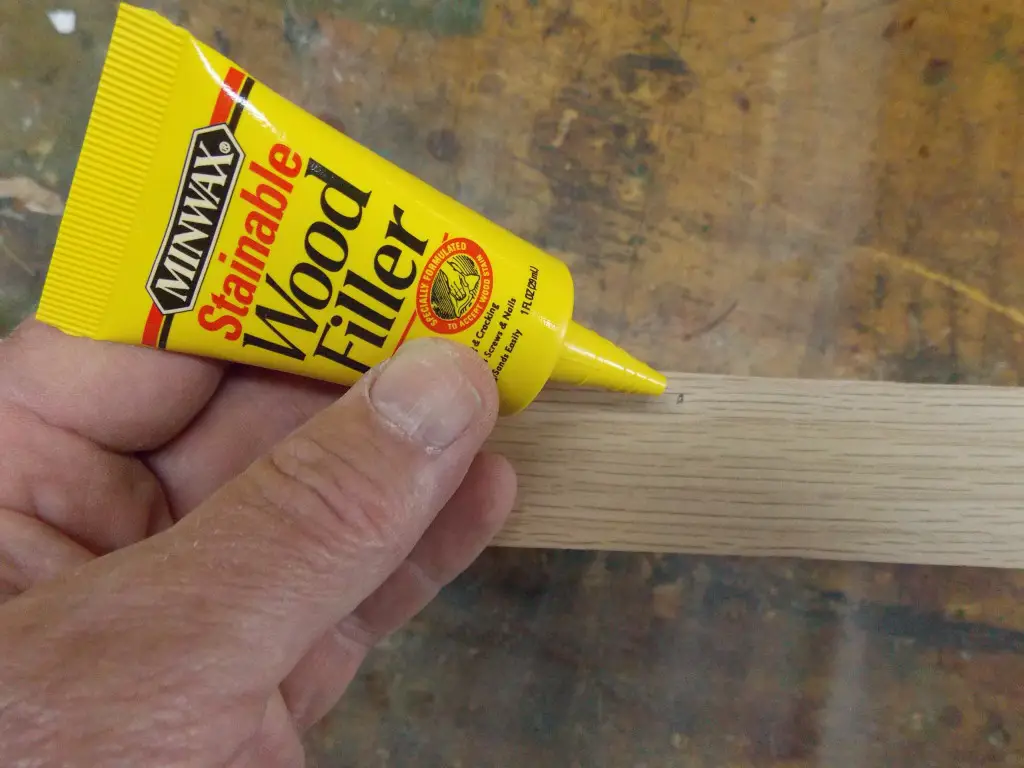
In the end, although you could definitely screw into wood filler, a few minor modifications can be an unwise choice based on the needs of your.
The task you’re working on it’s not recommended to nail screw into applying wood filler when you want to keep the integrity of the project’s structure.
But smaller-sized projects that do not need to be able to carry a great deal of weight might be fine to screw into filler wood.
Important to keep in mind that you’ll require self-drilling screws while inserting them into the applying wood filler in order to get the strongest, holding screws that you could get.
Additionally, certain dap plastic wood filler work better than others in anchoring screws.
In the ideal scenario, it is best to select a reputable applying wood filler such as an epoxy resin so that your screws remain fixed.
Is there a way to strengthen the wood filler to make it more durable?
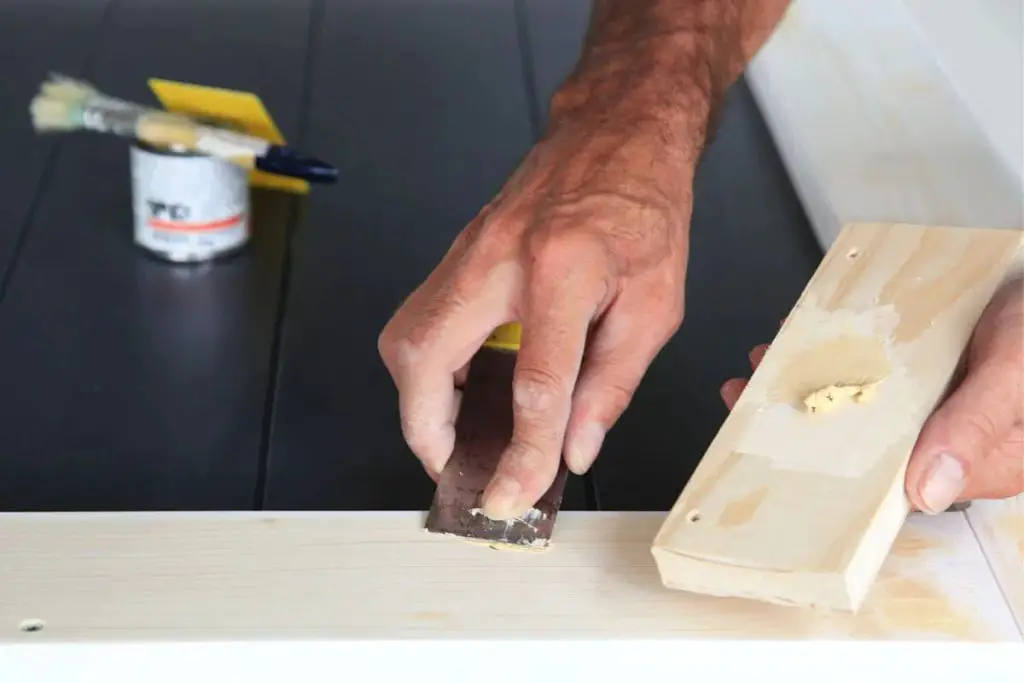
Yes, there are several ways to strengthen wood filler and make it more durable:
- Mix with Hardener: Many wood fillers come with a hardener or activator that you can mix in before application. This chemical reaction can significantly increase the filler’s strength and durability. Follow the manufacturer’s instructions for the specific product you’re using.
- Use Epoxy Wood Filler: Epoxy-based wood are known for their exceptional strength and durability. They are available in two parts that you mix together, creating a strong bond that can withstand heavy use and moisture. Epoxy fillers are often used for structural repairs and outdoor applications.
- Add Wood Flour or Sawdust: To reinforce a standard wood filler, you can mix in wood flour or fine sawdust from the same type of wood. This not only increases the filler’s strength but also helps it blend in better with the surrounding wood.
- Fiberglass Reinforcement: For extra strength in wood filler, you can incorporate fiberglass strands or cloth into the mix. This will make the filler more resistant to cracking and provide additional structural support.
- Sanding and Sealing: After the wood filler has dried, sand it down to achieve a smooth and even surface. Apply a wood sealer or primer to protect the filler from moisture and further strengthen the repaired area.
- Multiple Layers: Sometimes, applying multiple thin layers of wood filler, allowing each layer to dry completely before adding the next, can result in a stronger and more durable repair.
- Choose a High-Quality Filler: Start with a high-quality wood filler designed for your specific application. Some fillers are formulated to be more durable and resistant to cracking or shrinking than others.
- Proper Application: Ensure that you follow the manufacturer’s instructions for application, including mixing ratios, drying times, and surface preparation. Properly applied wood filler is more likely to be durable.
Remember that the effectiveness of these methods may vary depending on the type of wood, the specific wood filler product, and the intended use of the repaired area. Always read and follow the instructions provided with the wood filler for the best results.
Is wood filler a good solution for major structural repairs?
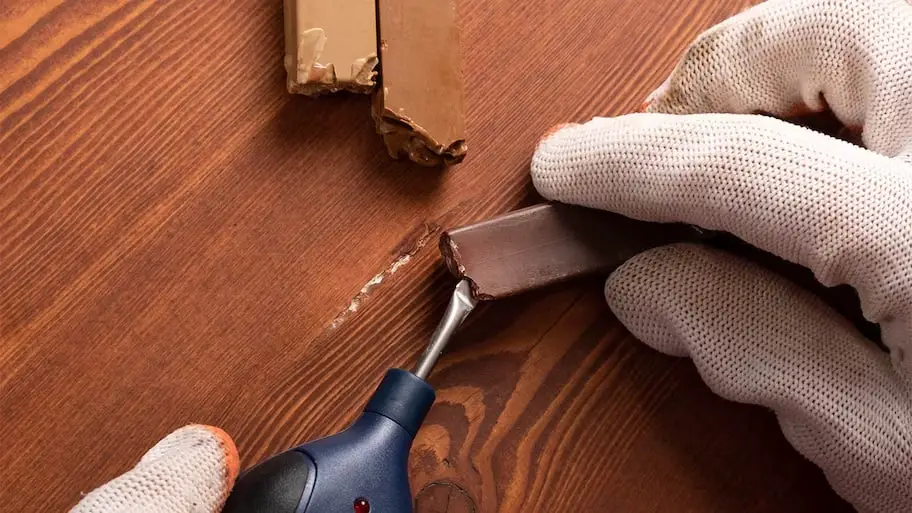
Wood filler is generally not a suitable solution for major structural repairs in wood. It is primarily designed for filling small to medium-sized gaps, cracks, nail holes, or surface imperfections in wood, rather than providing structural support. Major structural issues in wood typically require more robust solutions.
Can screw holes in wood be reused?
In many cases, screw holes in wood can be reused, but it depends on several factors:
- Hole Size: The size of the hole plays a significant role. If the screw hole is significantly larger than the screw being used, it may not provide enough grip or stability for the new screw. You may need to fill the oversized hole with a suitable filler or dowel and then drill a new hole for the screw.
- Wood Condition: The condition of the wood around the screw hole matters. If the wood is damaged or weakened around the hole, it may not securely hold a new screw. In such cases, you might need to reinforce or repair the wood before reusing the hole.
- Previous Screw Type: If the hole was originally created for a different type of screw (e.g., a wood screw, machine screw, or lag bolt), you should use a screw of the same type and size for the best results. Using a larger or smaller screw may not provide a secure fit.
- Number of Reuses: Screw holes can become worn or enlarged after multiple uses. If a hole has been reused several times, it may not hold a new screw securely, and you might need to consider alternative fastening methods or repair techniques.
- Screw Length: Ensure that the length of the screw is appropriate for the job. If the screw is too short, it may not penetrate deep enough into the wood to provide a strong connection.
- Pilot Hole: When reusing a screw hole, it’s a good practice to create a pilot hole to guide the screw. This can help prevent splitting of the wood and make it easier to drive the screw in.
- Lubrication: Using a lubricant or wax on the screw threads can make it easier to drive the screw into the existing hole.
Video: Can you screw into wood filler?
FAQ
What wood filler can take screws?
Roxil Wood Filler is durable and is able to hold nails or screws. It is useful in fixing damaged screw holes and nail screw holes. Wood fillers are composed of steerein. They are poisonous for human beings. Roxil Woodfill has no styrene contents.
Can you screw into gap filler?
This is very important in the gap in which movement can be anticipated. The best product for these fillings is ‘Plasti-Bond Heavy Duty Bog’.
Can wood filler cover screws?
Wood filling can help to protect screws and nails, especially for painting your project.
Can you screw into wood wall filler?
Polycell Deep Gap Polyfilla is an efficient way to fill the stripped screw hole to minimum 20mm. Easy sanding, with an even finish. The 20mm hole is filled that holds the small screws and nails. It can be filled in one request that is wrinkle-free.
How Long Does It Take For The Wood Filler To Dry Before Drilling?
The duration of drying for filler wood before you drill through it should be between 3 and 6 hours when fills a drilling depth of 1/8 inch and three days when the depth of filling is 1/4 inches. The wood filler’s drying time is dependent on the depth of your fill holes and the amount of wood filler you’ve used.
Can You Put Screws Into Ronseal Wood Fillers?
Similar to other wood fillers, you can put screws on Ronseal wood filler after the curing time. Ronseal is a multi purpose sealant for your wood project that won’t shrink or crack easily.
Before inserting screws into the filled area ronseal wood filler, ensure that the filler is completely dry and hardened.

